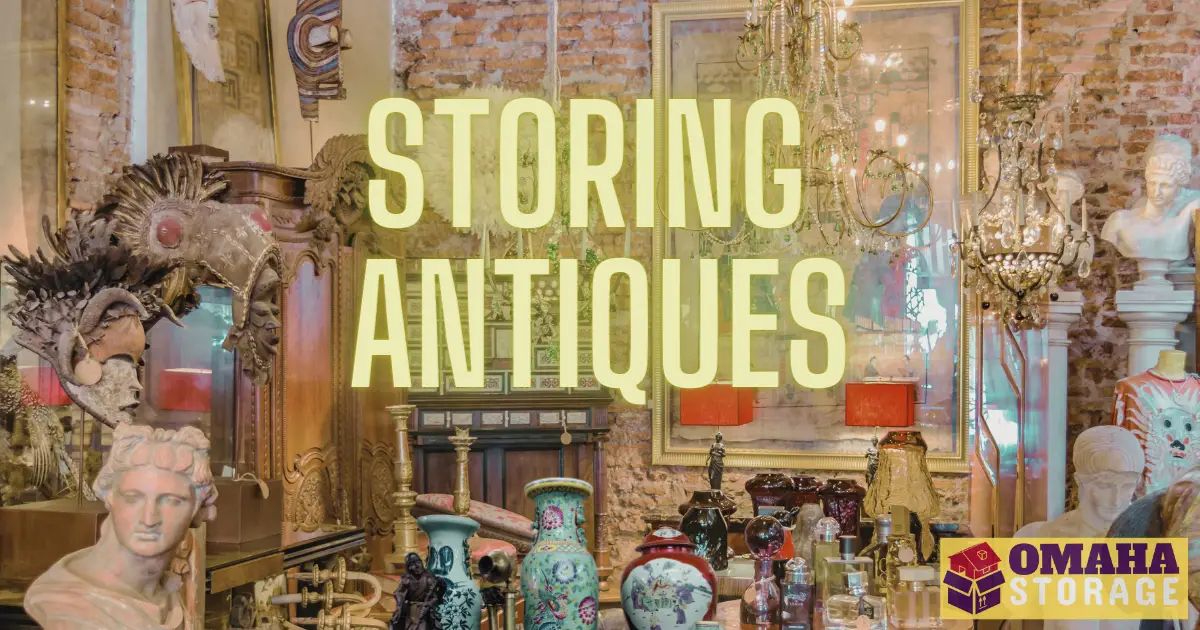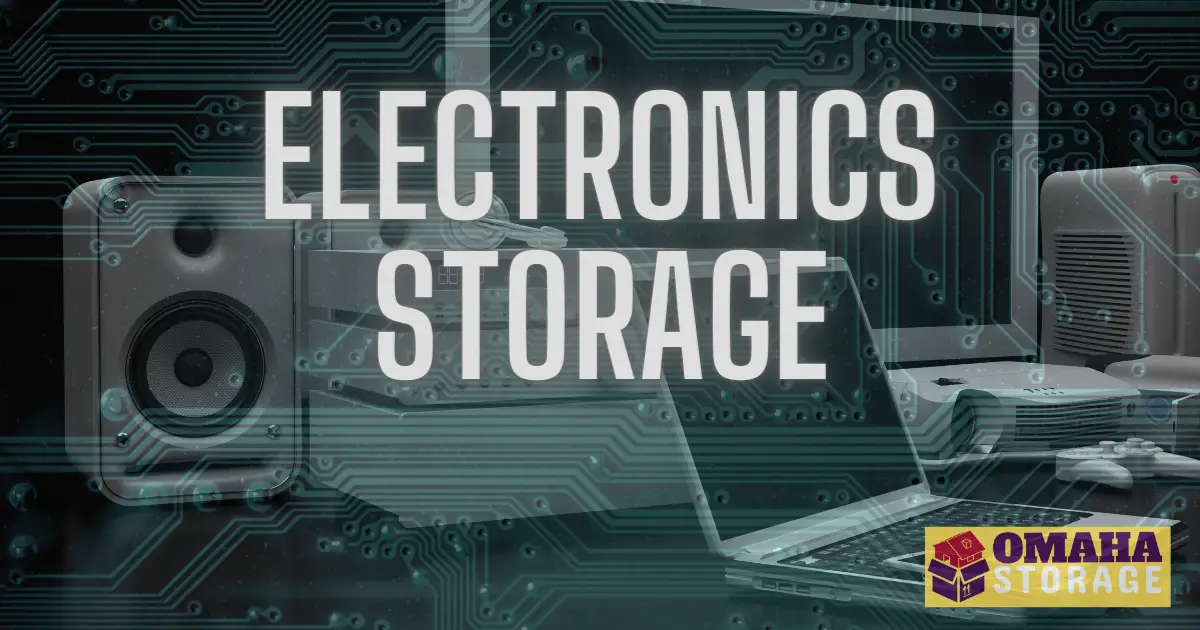Antiques and collectibles are more than just objects; they’re time capsule mementos — each carrying a piece of history that’s as unique as it is precious.
Preserving these treasures isn’t as simple as stashing them in a corner of the attic. Treasured memories require careful thought, meticulous preparation and a keen understanding of needs.
We put this guide together to be your personal roadmap to storing antiques and collectibles — ensuring they’ll continue to tell their stories for generations to come.
Understanding Antiques and their Storage Needs
These items are often delicate, sensitive to temperature and humidity and susceptible to damage from improper handling. Understanding the needs is the first step in truly preserving antiques.
As you’ve likely found out, the value of antiques often goes way beyond their price tag. They’re fragments of the past, each with a personal story to tell.
With age also comes fragility. Antique furniture can warp (or crack), artwork can fade and ceramics can nick, chip or break. That’s why special storage considerations are warranted.
When preparing antiques for storage, first up is cleaning. Dust and grime can lead to damage over time, so a thorough (but gentle) cleaning is in order.
Next assess your items for any needed repairs. Hopefully they are just simple repairs. I’ve found a simple colored duct tape, bread bag twist ties and JB Weld glues can work quick wonders. If you don’t do the repairs prior to storage, the storing of damaged antiques may lead to further deterioration.
This is where the importance of using protective materials and containers can not be overstated. Bubble wrap, furniture covers, acid-free tissue paper and sturdy boxes are all essential.
Not only are you protecting your antiques from physical damage — you’re also creating a barrier from dust, pests and environmental issues.
Storing Antiques
I’ve found that the best place to store your antiques and collectibles is in a climate-controlled storage unit. And you probably already knew that.
Many people are aware that this will maintain a constant temperature and humidity level, providing an ideal environment for sensitive items. But they also offer protection against dust, pests and other threats.
Once you’ve chosen a storage unit, next comes proper organization. Organizing and cataloging your items will make it easier to find what you need and keep track of your collection.
This also helps prevent accidental damage caused by moving items around and saves time later on. Making a nice little map of your storage unit detailing “what is where” will be very helpful in the future. Believe me… I’ve been there.
When storing antiques, position can be everything. Try to avoid placing items directly on the floor, where dust and pests might get to them.
Instead use shelving or pallets to keep your items off the ground. Aim for the sturdiest shelves that fit in your budget.
On the other hand, never stack heavy items on top of fragile ones. Boxes and even plastic containers can collapse and it’s a recipe for saddening disaster.
Antiques Storage Tips
Storing antiques effectively requires a bit of know-how.
Here’s some tips to help you along the way:
Use correct materials
Acid-free tissue paper is great for wrapping delicate items, while bubble wrap can provide extra protection for fragile pieces. For furniture, consider using covers (or blankets) for added protection.
Avoid plastic
While it might be tempting to wrap everything in plastic for protection, this can actually trap moisture and lead to mold and mildew. I’m guilty of having done that in the past.
Instead see if you can find breathable plastic materials. This will also help for later on.
Label everything
But try not to generically label everything, be more precise than just having a box that says what room it’s from.
It’s easy to forget what’s in each of those boxes, especially if you’re holding a large collection.
Specifically label boxes and create an inventory that will help refresh your memory later on.
Check on stored items regularly
Even with the best storage conditions, it’s a good idea to check on your items regularly.
This allows you to catch any potential issues early and take necessary action.
For example, if a shelf collapsed or if moisture is seeping into your storage unit. You’ll want to identify and correct those as soon as possible.
Safe Storage for Antiques
As mentioned before, when it comes to antiques and collectibles, safety is paramount. Safety for your items, safety for you.
For your items… a climate-controlled storage unit is your best bet. These units maintain a consistent temperature and humidity level, keeping your devices safe from the elements.
For the safety of you, try to make a pathway through the middle of your unit so you can access and see everything on the sides.
Consider the positioning of any electronics. Avoid placing those directly on the floor where they can be vulnerable to dust and pests.
The nice thing about a climate-controlled storage unit is that it takes the guesswork out of maintaining the right conditions.
It’s like having a personal caretaker for your antiques, one that’s on duty 24/7. But remember even the best caretaker can’t protect your items if they’re not set up properly.
Positioning can be like setting up a mini-museum. You wouldn’t stack priceless artifacts on top of each other in a museum, would you? Imagine how that would look… the same principle applies here.
Avoid placing items directly on the floor, where they’re more susceptible to dust, pests and potential water damage.
Use pallets or shelving to elevate your items. The main point being… don’t stack heavy items on top of fragile ones.
Climate Control for Antiques
You may be thinking… “is it worth the added expense of Climate Control?”
Climate control isn’t a luxury when it comes to storing antiques; it may be a necessity. And if you talk to your storage center, they can usually cut you a deal on Climate Control that doesn’t cost much more than standard self storage.
The thing is that antiques are sensitive to changes in temperature and humidity. Too much heat can cause warping and cracking — while too much humidity can lead to mold and mildew. Overly dry conditions can cause wood to split and crack.
So it basically comes down to the reason why you’re storing these items. That reason will provide your answer as to what budget you find to be appropriate.
The ideal temperature for storing antiques is around 50-75 degrees Fahrenheit, while the ideal humidity level is around 50-55%.
A climate-controlled storage unit should maintain these conditions year-round, providing an optimal setting for your antiques.
Packing Antiques for Storage
Packing antiques for storage is a delicate process. Each item needs to be handled with care and given the proper protection.
Here are some reminders to keep in mind:
Materials
As mentioned above, plenty of bubble wrap, packing peanuts and sturdy boxes are essential supplies. For delicates, consider using acid-free tissue paper.
Provide plenty of padding
Antiques should be snug in their boxes, with plenty of padding to prevent movement. Remember, moving around inside leads to damage.
Don’t overload boxes
It’s better to use more boxes with less in each one than to cram everything into a few boxes. This helps prevent damage from items shifting or boxes being too heavy and crushing the boxes below.
Long-term Antiques Storage
Storing antiques long-term requires some extra consideration. If you’re planning to store your antiques for an extended period, you might want to consider professional storage solutions.
These services can provide the optimal storage conditions and give you peace of mind. They also often offer additional services, such as transportation, packing and insurance.
The key to successful long-term storage is also regular maintenance. Even in the best storage conditions, it’s a good idea to check on your items regularly, clean the storage unit, and refresh any protective materials as needed.
Storing antiques and collectibles may seem daunting, but with the right knowledge and preparation, it’s a task that’s well within your reach.
The goal is to preserve the history and value of your items for years to come. Especially if you have family members and relatives breathing down your neck, wondering… “what are you doing to take care of our family treasures?”
I know, it’s a lot of stress. Having good storage (if you don’t have room at home), can remove some of that stress.
Take the time to prepare items properly, choose a good storage unit and follow the best practices above for packing and storage.
Your antiques and collectibles are more than just objects; they’ll remain pieces of history. And they deserve to be treated as such.
For further reading about handling antiques…
- National Geographic – How to Store Antiques – Anchor Text: National Geographic’s Guide on Storing Antiques
- The Spruce – Storing Antiques – Anchor Text: Tips on Storing Antiques from The Spruce
- StorageCafe – A Guide To Storing Collectibles – Anchor Text: StorageCafe’s Guide on Storing Collectibles



